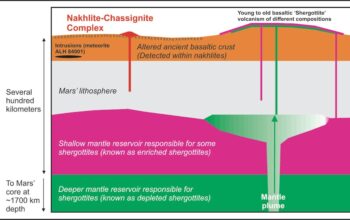The pursuit of exoplanets, those elusive worlds that orbit stars beyond our solar system, has garnered significant attention in contemporary astrophysical research. As humans gaze skyward, striving to extend our reach beyond the confines of Earth, the metaphors of exploration resonate powerfully with the celestial bodies that tantalizingly beckon us from the cosmic ether. This endeavor, encapsulated by the phrase “Bringing the Stars Home,” captures not just the essence of discovery, but also the intrinsic allure of the unknown—a sentiment deeply embedded in the human spirit.
The allure of exoplanets lies not only in their variety and complexity but also in their potential to answer profound questions regarding our place in the universe. As we survey the tapestry of the cosmos, we are gifted with a panorama of diversity; planets teem with possibilities, ranging from worlds that mirror Earth’s conditions to those that challenge our understanding of habitability. Exoplanets are, indeed, a reflection of our aspirations, delivering a promise of knowledge that compels scientists and laypeople alike.
The first confirmed exoplanet, 51 Pegasi b, was discovered in 1995, heralding a new era in astronomical research. This giant gas planet orbited its star at an astonishingly close distance, defying earlier assumptions regarding planetary formation and evolution. This discovery ignited a flurry of activity across the globe, sparking the imagination of astronomers and the general public alike. The metaphorical journey of bringing the stars home had officially commenced; it was not merely about unearthing distant objects but unraveling the fundamental mechanisms that govern planetary systems.
The technological advancements that facilitated the discovery of exoplanets exemplify the harmony between ingenuity and exploration. Instruments such as the Kepler Space Telescope and the Transiting Exoplanet Survey Satellite (TESS) serve as our eyes in the cosmos, meticulously measuring the minute dimming of stars as planets transit across their faces. The sensitivity of these instruments allows us to detect planets that would otherwise remain hidden in the vastness of space. Each flicker of light captured represents not just a scientific achievement, but a personal victory in our collective quest for understanding.
Moreover, the techniques employed in exoplanet hunting symbolize a broader philosophical journey. The transit method, for instance, transforms a simple observation of starlight into a complex dance of mathematical precision, where the size of the planet, its distance from the star, and the potential for life coalesce in an intricate web of knowledge. This transformation is evocative of the ancient desire to see beyond the horizon, to grasp the whispers of the stars and, ultimately, to bring them closer to home.
Embedded within this scientific exploration is yet another intriguing layer: the possibility of alien life. The discovery of potentially habitable exoplanets—those that reside in their star’s “Goldilocks Zone,” where conditions may be just right for liquid water—stirs the imagination. The notion that we are not alone in the universe is a catalyst for philosophical and scientific discourse that transcends cultural boundaries. Each new exoplanet provides a canvas upon which theories of extraterrestrial existence can be painted, and with each brush stroke comes the thrill of possibility.
However, it is crucial to temper our aspirations with a discerning understanding of the vastness and challenges inherent in interstellar travel. While the metaphor of bringing the stars home evokes a sense of nostalgia and nostalgia for exploration reminiscent of ancient mariners, the practicalities of such endeavors remain strikingly daunting. The nearest confirmed exoplanet, Proxima Centauri b, lies over four light-years away—a distance that would take current spacecraft thousands of years to traverse. Thus, while the pursuit of knowledge propels us to seek those distant worlds, we must grapple with the reality that our journeys are more cerebral than physical for the time being.
In examining the implications of exoplanet research, one cannot overlook the ethical dimensions that arise as we consider the potential for human colonization of other worlds. The prospect of terraforming planets or shifting populations to distant Earth-like worlds presents formidable moral dilemmas that intertwine with the very essence of existence. Can we ethically inhabit these celestial environments without repeating the mistakes made on our own planet? The intersection of scientific discovery and ethical responsibility encapsulates a narrative that is as compelling as the quest for exoplanets themselves.
Ultimately, the exploration of exoplanets transcends mere scientific inquiry; it represents a profound reflection of humanity’s yearning for understanding and discovery. The metaphoric “bringing home” of the stars is emblematic of a journey that integrates knowledge, aspiration, and ethical consideration with the shared dream of a brighter future. In this sense, while we may not physically traverse the cosmos today, the insights harvested from our celestial excursions serve to enrich our understanding of the universe and our role within it.
As astronomers continue to scour the night sky for new worlds, there remains an inherent anticipation that one day, through ingenuity and perseverance, humans may indeed bridge the cosmic chasm. For now, however, the journey is one of introspection, knowledge accumulation, and metaphorical voyages into the depths of the unknown. The stars, in their endless array, ultimately become more than mere points of light; they transform into symbols of our innate desire to explore, to understand, and, ultimately, to connect the distant expanses of the universe to the core of our existence here on Earth.












